Table of contents
Peanuts ( Arachis hypogaea ) develop a very tasty aroma when roasted. Products with the outer shell are also usually roasted , but without salt . If you buy roasted peanuts in shelled form, they often contain a lot of salt.
Use in the kitchen:
Peanuts taste good raw, dried (dry) or roasted as a snack between meals and give stews, soups or curries a special taste. Make sure not to buy salted peanuts if possible. The salt content is usually too high.
Peanuts can also be processed further and used in cookies, pastries, smoothies or pestos. The high-calorie legume often leads to increased consumption. However, it must be noted that the LA:ALA ratio is particularly poor - more on this under "Ingredients".
Homemade recipes with peanuts:
Vegan peanut recipe with good health value: Christmas salad with beetroot, rocket, orange and jicama .
Vegan recipe with few peanuts but high enjoyment value: Homemade "Yolos" (caramel pralines) with Medjol dates .
| Not only vegans or vegetarians should read this: Vegans often eat unhealthily. Avoidable nutritional mistakes . |
Shopping - where to buy?
At major retailers such as Coop , Migros , Denner , Volg , Spar , Aldi , Lidl , Rewe , Edeka , Hofer etc., fresh, i.e. unroasted and unsalted peanuts (usually in shell) are available during the season (in late autumn and throughout the winter). This applies to Western Europe. Roasted and usually additionally salted peanuts can be found all year round.
When buying roasted, unsalted peanuts, choose those in their shells and organic quality. Products sold loose are often fresher than those in bags. If possible, however, choose raw peanuts of the highest quality. In Europe, you can get this raw product almost exclusively over the Internet.
Storage:
Peanuts should be stored in a cool, dry and dark place. Ideal temperatures, between 8 and 10 °C, can be found in a dark cellar, a cool pantry or the refrigerator. Peanuts should always be stored sealed so that the oil in the nuts does not absorb other flavors. To avoid mold or a rancid taste, dryness is the most important criterion when storing them. How long can you store peanuts? The maximum storage time is four weeks. Can you freeze peanuts? In a well-sealed, airtight container, you can store peanuts in the freezer for up to a year.
Ingredients - Nutritional value - Calories:
Peanuts are very energy-rich and, above all, fat-rich legumes. 1
Peanuts are not a superfood, but fat bombs - but at least: At first glance, with 50% fat, the proportion of saturated fatty acids ("only" 6.3 g) is not bad. The sugar content of 4.7 g in the carbohydrates (16 g) is actually good too. 3,100 g already cover half of the daily protein requirement and that in a fairly good composition of the eight "classically essential" amino acids. Unfortunately, 100 g of peanuts contain a full 70% of the daily requirement of fatty acids - and that in a poor composition. Peanut butter with an energy density of 6.2 kcal/g can be directly compared to smoked pork bacon, which has the same density. Not even chocolate or low-fat butter (3.9) reach this density, only oils surpass it with 9 kcal/g.
Cashews and peanuts have a very poor LA:ALA ratio in common. Peanuts have 16 g of the inflammation-promoting omega-6 linolenic acid (LA) and only 0.1 g of the healthy omega-3 alpha linolenic acid (ALA) . So a ratio of 160:1 instead of the 5:1 recommended by the Federal Office. Cashews (33/20/48) have 7.8 g LA to 0.06 g ALA, so a ratio of 102:1. See also the ingredient tables below after the text. 3
Nevertheless, you can read on almost every website how healthy peanuts (or cashews) are, because these websites either write uncritically or want to sell peanuts.
Every food has its good nutrients. For example, phosphorus , the highest mineral content is in peanuts: 388 mg/100g. Compared to unpeeled hemp seeds (1677 mg), wheat bran (1013), chia seeds (860), dried porcini mushrooms (642), linseed (642) or oats (523), to name just a few, this is rather low. 3
For example, manganese , the second highest mineral content in peanuts: 188 mg/100g. Compared to unpeeled hemp seeds (700 mg), wheat bran (611), raw cocoa beans (500), celery (440), linseed (392), chia seeds (335) this is also rather low. Nevertheless, manganese is advertised. 3
A positive point worth mentioning is the relatively high proportion of L-arginine, which regulates various hormones.Pumpkin seeds have around 5300 mg of arginine per 100 g, peanuts 3460 mg, almonds 2750, pine nuts 2400, lentils 2240, etc.
Health aspects - effects:
Peanuts have a very unhealthy fatty acid ratio of LA:ALA. With a ratio of at least 57:1 up to 160:1 (compare with the non-roasted ones!), they contain hardly any alpha-linolenic acid (omega-3 fatty acid), which promotes the development of inflammation and diseases.
However, retailers and the industry attribute many positive aspects to peanuts: The thin skin of peanuts contains antioxidants, more precisely OPC (oligomeric proanthocyanidins) - secondary plant substances. According to an American study by Purdue University, peanuts are said to have a positive effect on increased LDL cholesterol levels (with 56 g of peanuts daily). 6 Only 15 test subjects were sufficient for this, and the comparison alternative must therefore have had an even worse composition.
If you eat peanuts with high-fat foods, your triglyceride levels (blood fat levels) are said to improve. This was investigated by a researcher from the Department of Nutritional Science at Pennsylvania State University . The process sounds contradictory, as peanuts themselves are very high in fat. The study examined triglyceride levels after the test subjects had drunk a peanut shake or a shake without peanuts after eating - but this must have been an even worse composition, because the levels dropped significantly in those who had the peanut shake. Lead researcher Xiaoran Liu added that even with this knowledge, you should not eat peanuts indiscriminately. Peanuts can occasionally be included in a meal in place of another high-fat, low-nutrient ingredient. However, you should always pay attention to the calorie content. 7
We can only warn: vegans and vegetarians who are misinformed or uninformed generally live worse than normal eaters - and a study is sure to come out that will ruthlessly expose this (see link in the box above). This would then stop the vegan hype that is so important for animal welfare and the environment and discredit the oriented minority. This has been our fear since 2014! See this link to see what happened with raw food (The Giessen Raw Food Study) .
Recommendations of the Federal Nutrition Commission (EEK) from 2006:
In 2003, the EEK was commissioned by the Federal Office of Public Health (FOPH) to adapt the health significance of fats and oils recorded in 1992 to the latest scientific findings. We have described these in more detail for the ingredient olive oil , here are just the most important points:
Polyunsaturated fatty acids are essential and are divided into two main groups (there are others): linoleic acid and its derivatives as the group of n-6 or omega-6 fatty acids (LA) and α-linolenic acid or alpha-linolenic acid - often just called linolenic acid or ALA for short (omega-3 or n-3) - and its derivatives. The main sources of pro-inflammatory LA are vegetable oils 12 , but also nuts and seeds! The main sources of healthy, anti-inflammatory omega-3 (ALA) are, for example, rapeseed oil, linseed, walnuts and leafy vegetables. 12
Health-conscious people get polyunsaturated fatty acids from linseed , chia seeds , walnuts (tree nuts), macadamia , herbs and leafy vegetables because they have a particularly good LA:ALA ratio. You can find detailed tables for practically all foods under our ingredients, which can also be accessed from the recipe. The recipes also summarize this. For example, Erb-Müesli has the ideal composition in a ratio of 1:1 (LA to ALA).
Direct statement from the EEK: Too high a consumption of n-6 fatty acids can promote thrombosis and inflammation. It is therefore sensible to reduce the ratio of n-6:n-3 to 5:1. The current ratio is currently around 10:1. There is evidence that lowering this ratio can lead to fewer atherosclerotic diseases and reduce inflammatory processes. 12 Atherosclerotic disease (also imprecisely called arteriosclerosis) is the technical term for cardiovascular disease, primarily coronary heart disease - but also applied to vascular disease.
Contrasting program at the "Center for Health" (updated March 27, 2019) - with the title: "Peanuts - superfood for the blood vessels": "Numerous scientific studies have long shown that peanuts - consumed in the right amount - are anything but potential fattening agents." ... "Participants who had high cholesterol levels at the beginning of the study showed a reduced total cholesterol level and reduced LDL cholesterol levels at the end of the study - after just four weeks in which they had eaten 56 g of peanuts daily." If you read the FASEB study on this, Adding peanuts to a meal benefits vascular health , it quickly becomes clear how the result was achieved: The Peanut Institute "supported" it. What these 15 test subjects received as an alternative - one with harmful substances, one can assume - is not declared, at least in the abstract. Instead, the center then shows an advertisement for such products and offers courses to become a specialist consultant for holistic health in another advertisement ...
Dangers - Intolerances - Side effects:
The allergy potential of roasted peanuts is very high. Typical signs of allergic reactions are hives, watery eyes and breathing difficulties. Anaphylactic shock can even occur rarely. 2 Raw peanuts, on the other hand, have a lower allergy potential because the immune system perceives them differently. The roasting process, which is mainly used for export to the West, changes the proteins in the peanuts. There are significantly fewer allergies to peanuts in East Asia. There they are mainly eaten raw or cooked. 4 Peanuts also release histamine, which is why they should be avoided if you are histamine intolerant!
One problem with storage is the development of the mold Aspergillus flavus . This produces toxic aflatoxins in the peanuts, which have a carcinogenic effect. Diseases such as kidney bleeding, cancer and heart failure can occur. 5 Therefore, there are strict import controls for peanuts in the USA 8 and the EU 9 .
Occurrence - Origin:
The peanut originally comes from the Andes in South America. However, humans spread it very quickly throughout the tropics and subtropics. Today, China, India, Nigeria, the USA, Sudan, Myanmar, Chad, Argentina, Cameroon and Senegal harvest around 82% of the total world production. The most important trading countries for export are the USA, Argentina, Sudan, Senegal and Brazil. The main importers are the EU, Canada and Japan.
Cultivation - Harvest:
The annual legume needs loose, sandy soils as it does not tolerate waterlogging. The peanut bush needs some space, so a distance of at least 15 cm must be maintained in the row and 25 cm between the rows. The underground fruits are harvested using special machines in two steps. First, a digging device is used to loosen the plant and cut off the taproot. Then a shaking device is needed to lift the plant out of the ground and shake off the soil. The machine places the plants upside down on the ground with the pods on top. After two or three days of field drying, the threshing machine comes and separates the pods from the tendrils. Now the water content is still too high at around 40%. The peanuts lying on the cart are dried down to 5-10% water content using hot air systems. 11
Growing in the garden or as a potted plant:
Would you like to try growing peanuts yourself? This only works with raw peanuts in the pod. It is best to place them in a small pot with potting soil or special cactus soil 3 - 4 cm into the soil. Since peanuts are used to tropical or subtropical climates, a greenhouse, conservatory or, for cultivation, a warm, sunny spot by the window is ideal. When the plant is strong enough, you can transplant it. Peanuts prefer temperatures between 25 and 30 °C. The legumes always need moist soil, but do not tolerate waterlogging. Therefore, make sure you use a water-permeable pot and sandy soil. As soon as the leaves of the peanut plant appear yellowish, the fruit is ripe. You must pull the plant out of the pot with the roots and pick off the legumes. Before eating, dry the peanuts thoroughly and make sure that they do not contain any mold. The roots and leaves are an enrichment for the compost due to their high nutrient content, especially nitrogen. 10
General information:
From a botanical point of view, peanuts ( Arachis hypogaea ) are legumes. In everyday language, they are more likely to be classified as nuts. This is probably due to the shell (pod), which, like nuts, remains closed. The English word "peanut" means "pea nut". This again shows that they are legumes. Unlike other legumes, peanuts can also be eaten raw.
Peanuts have always been very popular: in 2007, archaeologists in Peru found a wild variety of peanut that was cultivated around 7,840 years ago. An old name in Nahuatl, "tlalcacáhuatl", literally means "cocoa bean of the earth". This term was also used for the Spanish "cacahuete" and the French "cacahouète" (also "cacahuète"). Finds from Brazil show the deliberate cultivation of peanuts 2,000 years ago.
In addition to the roasted and salted products, other processed products include sweets, peanut butter , peanut oil and peanut crisps. Peanuts are also used in the chemical industry, in cosmetics and as a feed additive in animal husbandry. Products traded to Europe are mainly used as snacks or as an ingredient in sweets.
Literature - Sources:
Bibliography - 12 Sources
| 1. | Deutschsprachiges Wikipedia. Erdnuss. |
| 2. | Hugh A, Sampson MD. Peanut Allergy. The New England Journal of Medicine. 2002;346. doi:10.1056/NEJMcp012667 |
| 3. | Taber RA, Schroeder HW. Aflatoxin-producing Potential of Isolates of the Aspergillus flavus-oryzae Group from Peanuts (Arachis hypogaea). American Society for Microbiology. 1967; 15(1). |
| 4. | Moghaddam AE, Hillson WR, Noti M, Gartlan KH, Johnson S, Thomas B et al. Dry roasting enhances peanut-induced allergic sensitization across mucosal and cutaneous routes in mice. The journal of Allergy and Clinical Immunology. Dec 2014; 134(6). doi: 10.1016/j.jaci.2014.07.032. |
| 5. | Taber RA, Schroeder HW. Aflatoxin-producing Potential of Isolates of the Aspergillus flavus-oryzae Group from Peanuts (Arachis hypogaea). Applied and Environmental Microbiology. 1967; 15(1). |
| 6. | McKiernan F, Lokko P, Kuevi A, Sales RL, Costa NM, Bressan J, et al. Effects of peanut processing on body weight and fasting plasma lipids. PubMed. Aug. 2010; 104(3). doi: 10.1017/S0007114510000590. |
| 7. | Federation of American Societies for Experimental Biology (FASEB). Adding peanuts to a meal benefits vascular health. ScienceDaily. Mar.2015. |
| 8. | Dickens JW. Aflatoxin control program for Peanuts. Journal of the American Oil Chemists’ Society. Mar. 1977; 54(3). doi:10.1007/BF02894413. |
| 9. | Verordnung (EG) Nr. 1152/2009 der Kommission vom 27. November 2009 mit Sondervorschriften für die Einfuhr bestimmter Lebensmittel aus bestimmten Drittländern wegen des Risikos einer Aflatoxin-Kontamination und zur Aufhebung der Entscheidung 2006/504/EG Text von Bedeutung für den EWR. Amtsblatt. Nov.2009; L 313(28). |
| 10. | gartentipss.com - Erdnüsse anbauen - so wirds gemacht. |
| 11. | usaerdnuesse.com - US Erdnüsse EU Recht. Überblick über die US Erdnussindustrie. US Anbau und Ernte. |
| 12. | EEK_Bericht_Fette_in_der_Ernährung_2006_DE.pdf |

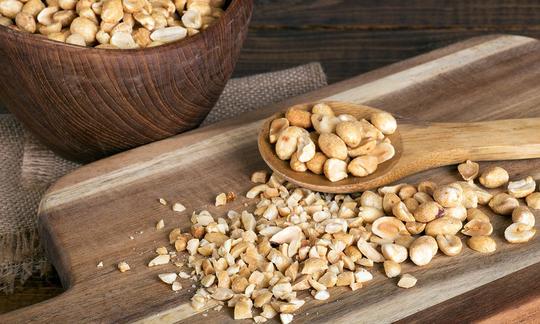

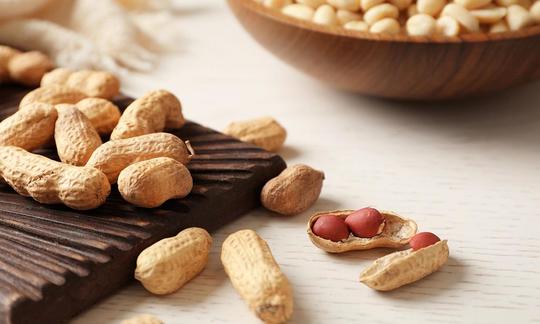

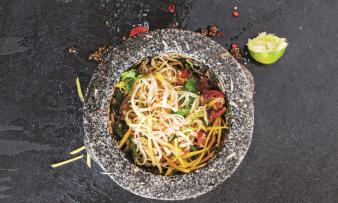
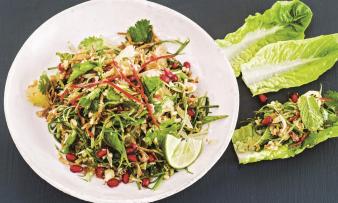


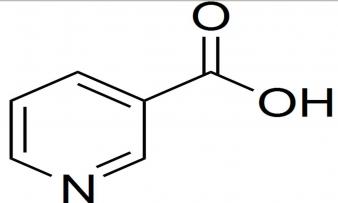


Comments